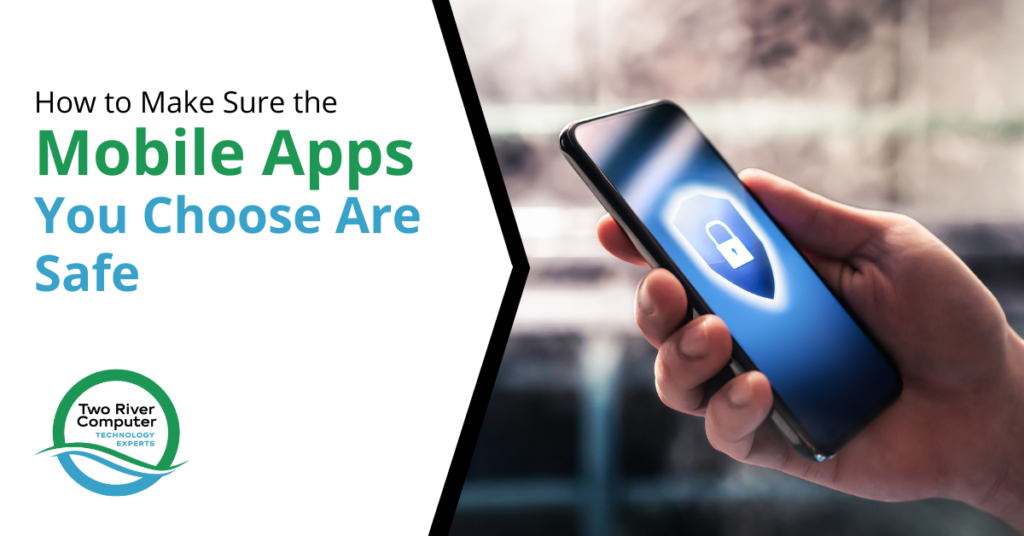
Where would we be in this world without mobile apps? Mobile apps bring more agility and practicality to our everyday lives. They help us stay informed, healthy, up-to-date, organized, and entertained. However, it is essential to note that the apps you choose to download might be unsafe.
Many users have downloaded apps without knowing that such apps are unsafe. This is because malware hides in these apps.
As a result, every year, security is improved in app stores like the Google Play Store, APKPure, and GetJar. But even with the security tools, malicious apps still get into people’s phones. These dangerous apps give criminals access to your resources and identity. Mobile malware is usually hidden inside tempting games, tools, and content.
Therefore, to protect your mobile device and ensure an app is safe, you have to know what to look for and where to look.
Best Ways To Make Sure Your Chosen Mobile App is Safe
Here are the seven best ways to ensure that the mobile apps you choose are safe before downloading.
1. Check out the review ratings and comments
Typically, well-known apps include ratings, user reviews, and comments. Before downloading an app, the reviews and comments are two of the most crucial things to read. But it’s essential to look at more than the app’s star rating. Numerous people have been led astray by the frequent promotion of messages with five stars.
Research shows that 94% of people base their decisions on review ratings and user reviews, and malicious developers take advantage of this trust by posting fake reviews on their apps.
Pay attention if more than one or two people are warning that the app is a scam or contains malicious components. Even if there are vague comments such as, “this app has a lot of ads,” “this app malfunctions,” or “I like it, but it has an issue,” it is better to be safe than sorry.
It’s great if the app has many positive reviews. However, carefully examine to discover if the reviews are similar. Similar reviews are usually very short, and sometimes they can be fake reviews. These short reviews always comment with general statements such as, “This app is great!” “I like the app a lot.”
Without a doubt, users sincerely leave reviews or comments like this. However, it is important you look at how often you see that review. If there are numerous short reviews with the same or slightly different statements, they might have been generated by a bot or copied and pasted.
2. Choose official stores to download apps
Before apps are published on app stores like Google Play or Apple’s store, there are certain rules they must obey. These rules make it difficult for apps with malware to be on those stores.
If you download an app from an unofficial app store, you will be at increased risk of downloading unsafe apps reformed by criminals, as the standards in these stores are less rigid. You can download apps from legitimate third-party platforms, including the APKPure, Aptoide, and Amazon App Store. You can hire react native developers sydney if you want to build a mobile application for multiple platform such as iOS & Android.
3. Check its last update
If the app is out-of-date, it may be more vulnerable to malware or security vulnerabilities. Find out when the app’s developer last updated it. Downloading an outdated app may not be compatible with your new device and may eventually damage your phone’s OS. A malware may corrupt your data, and you will need malware removal services to get your phone back on track.
4. Have an antivirus installed on your phone
Security or antivirus software installed on your phone will help you discover if an app is safe. This protection is especially valid for Android, as it acts directly on the OS. Security breaches happen frequently in real life too. TSCM Tools are useful to solve those security violations.
5. Pay attention to the installation process of the app
Some harmful or spam apps use the terms and conditions to sneak information past you. These app developers know that most users will click “Accept” without reading the T&C. In order to do this, when you click the accept, you have agreed to pop-up ads, data sharing, and data mining, among other things. To make sure you downloaded a safe app, read the T&C carefully.
If the app presents you with terms and conditions when you open it, read them. If it’s too hard to understand, try using a plain-language translator. If it’s still unclear, you might be better off just closing it and uninstalling it.
Read the terms and conditions if they are displayed to you when you launch the app, and ensure you follow the installation process. If the T&C or the installation process is unclear, it’s better to uninstall it.
Apps requesting a lot of additional information from you may attempt to steal your data. If they are not clear on why they need it from you, exercise extra caution.
6. Check the permissions
No matter the app you choose, before downloading or installing it, look at the permissions it needs. Some apps will ask for permission to access your location, call log data, or other private information. Think carefully about whether the app genuinely needs those details to function. It may be an unsafe app that contains malware and must be immediately uninstalled.
7. Ensure the app’s description is clear
Beware of exuberant descriptions that lack specificity. Apps that promise faultless performances or problem-free operations are rare. A genuine and safe app should be able to describe how each feature works and how it will benefit your intended use of the app. However, the descriptions in unsafe apps are usually vague and uninformative. That is a red flag.
Ensure the app’s description is clear, explains the app’s features, and is informative.
Start Downloading Safe Apps
Your phone and your personal information are something you should always protect. Some simple know-how should help you avoid the worst apps while ensuring you know the safest ones.
Do you have unsafe apps on your phone? Can’t detect if they are installed? Contact us at Two River Computer. We will give you tips on how to remove unsafe and malicious apps from your phone.


